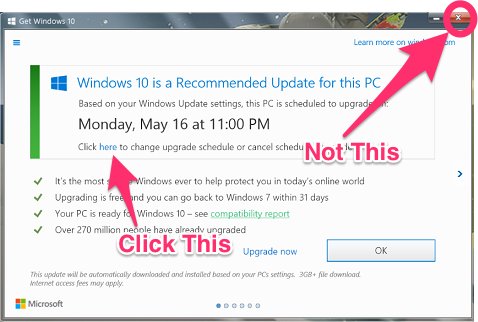When Windows 10 launched in July 2015, it came with a yearlong free upgrade offer for users of the older Microsoft Windows 7 and 8 operating systems.
Hundreds of millions of people took Microsoft up on the offer. Lots and lots more didn’t, opting to stick with the operating system they were most familiar with, for a wide variety of very good reasons.
Now, Microsoft Chief Marketing Officer Chris Capossela said on the “Windows Weekly” podcast with Paul Thurrott and Mary Jo Foley, that he regrets “getting too aggressive” with the campaign to get people to upgrade to Windows 10.
Microsoft, eager to get 1 billion machines onto Windows 10, bombarded users of Windows 7 and 8 with a selection of pop-up windows and notifications, urging them to take the plunge and upgrade. It was a tremendous annoyance to many, and some people even reported that their PCs upgraded without their permission.
Capossela says that, in general, he believes Microsoft did a pretty good job of managing the upgrade promotion.
"We know we want people to be running Windows 10 from a security perspective, but finding the right balance where you're not stepping over the line of being too aggressive is something we tried, and for a lot of the year, I think we got it right," Capossela said.
But there was one particular piece of the upgrade campaign that he says was way over that line. Just a few months before the deadline for the free upgrade offer, Windows 7 and 8 users were getting a confusing notification in which clicking the red X in the corner, usually the universal way to cancel something, would actually schedule the Windows 10 upgrade behind the scenes.

Capossela says it took only a few hours after that notification started going out for the feedback to come in and for Microsoft to realize that it had "gone too far." Windows users were not happy with Microsoft, and they were making their displeasure known. It did some damage to Microsoft's reputation, even while the company was quietly at work on a fix.
"Of course, it takes some time to roll out the update that changes that behavior," Capossela said. "And those two weeks were pretty painful and clearly a lowlight for us. We learned a lot from it, obviously."
Watch the full 'Windows Weekly' interview:

